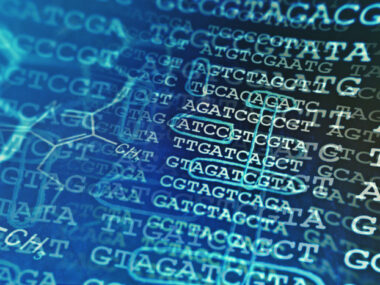Pregnancy, Newborn Characteristics May Help Distinguish PWS Infants
Written by |

Several characteristics during pregnancy and immediately after birth — such as maternal age, pregnancy complications, low birth size, reduced muscle tone, and infant feeding difficulties — may distinguish a newborn with Prader-Willi Syndrome (PWS) from healthy babies early in life, a study showed.
“By providing an overview of the prenatal and neonatal [newborn] characteristics of children with PWS, we aim at an earlier recognition of PWS by caregivers,” the researchers wrote.
“The recognition of early symptoms in newborns by clinicians and other health care workers is important for early diagnosis and the start of multidisciplinary treatment, which can lead to better outcomes in later life,” they added.
The study, “Prenatal and Neonatal Characteristics of Children with Prader-Willi Syndrome,” was published in the Journal of Clinical Medicine.
An early diagnosis of PWS is important for the start of treatment and disease management. Data show that earlier treatment has beneficial effects on height, metabolism and weight control, and walking.
However, in contrast to the evident clinical features of PWS in adults, the clinical characteristics in a newborn may be more subtle, which can lead to late diagnosis.
To address this challenge, the research team compared pregnancy and newborn characteristics between a group of 244 infants with PWS from the Dutch PWS cohort study and 365 healthy infants, who served as controls. The team also reviewed published literature from the general Dutch population.
Several differences in prenatal characteristics were noted between the PWS and healthy groups. The prevalence of a high maternal age at birth — older than 35 — was greater in the PWS group.
Complications involving the amniotic fluid, which surrounds the baby during pregnancy, were observed more frequently in PWS than among mothers whose infants did not have the genetic disorder. Polyhydramnios, or too much fluid, occurred in 27.3% of PWS cases, while oligohydramnios, or too little of the fluid, occurred in 7.7% of cases. In the healthy group, polyhydramnios occurred in 0.5% and oligohydramnios in 0.3%.
More mothers of PWS babies had a cesarean section than those with healthy babies (46.3% vs. 29%). There also was an increased occurrence of induced labor, when contractions are stimulated to initiate labor, and breech presentation — when the baby is born feet- or buttocks-first — among the PWS group.
At birth, PWS babies were significantly smaller with lower weight and length than healthy babies. More PWS infants were classified as having a small gestational age (21.1%), meaning they were smaller than expected for the number of weeks of pregnancy, compared with healthy babies (2.5%).
When comparing PWS babies to data from the general population, the team observed many of the same characteristics. In addition, higher paternal age, maternal high blood pressure during pregnancy, premature rupture of the amniotic sac, and previous miscarriages were observed more frequently in the PWS group.
Early and late births also were more common among PWS babies than in the general population.
All PWS babies had hypotonia, or low muscle tone, and 93.9% exhibited a poor suck, leading to the necessity of a feeding tube. In 95.9% of boys, cryptorchidism, or undescended testicles, were present.
PWS is caused by the loss of or defects in paternally-inherited genes in chromosome 15. In cases of maternal uniparental disomy (mUPD), a child inherits two inactive copies of chromosome 15 from the mother, instead of one active copy from the father and an inactive copy from the mother. Imprinting center defect (ICD) occurs when the father’s chromosome is present, but is inappropriately silenced. Most commonly, however, PWS occurs when the paternal chromosome 15 region is deleted.
The researchers found that newborns in the mUPD group had a higher median maternal and paternal age than the other groups, as well as a higher prevalence of mothers older than 35 at delivery. The babies in the mUPD group also were more like to be small for their gestational age — 31% versus 10% in ICD and 15.2% in the deletion group.
In deletion patients, PWS diagnosis occurred sooner. These children were diagnosed at a median of 5.7 weeks of age, compared with 9.9 weeks in mUPD and 23.3 weeks in ICD.
Overall, since no single newborn or pregnancy characteristic observed in this study is specific for PWS, the diagnosis can still be missed early in life, the researchers noted.
“Our advice is to perform genetic testing for PWS if a newborn presents with hypotonia and poor suck,” they wrote.
Closer monitoring during pregnancy also is helpful, the team said, noting that when obstetricians recognize risk factors for PWS, both the pregnancy and delivery teams and the families can be prepared even before birth. Recognizing newborn characteristics of PWS also can help prevent late diagnoses.
“In conclusion, our study presents an overview of prenatal and neonatal variables in infants with PWS compared to healthy infants. Our findings show that suspicion of PWS can be raised prenatally and postnatally and that the diagnosis can be made within the first weeks of life,” the researchers wrote.







